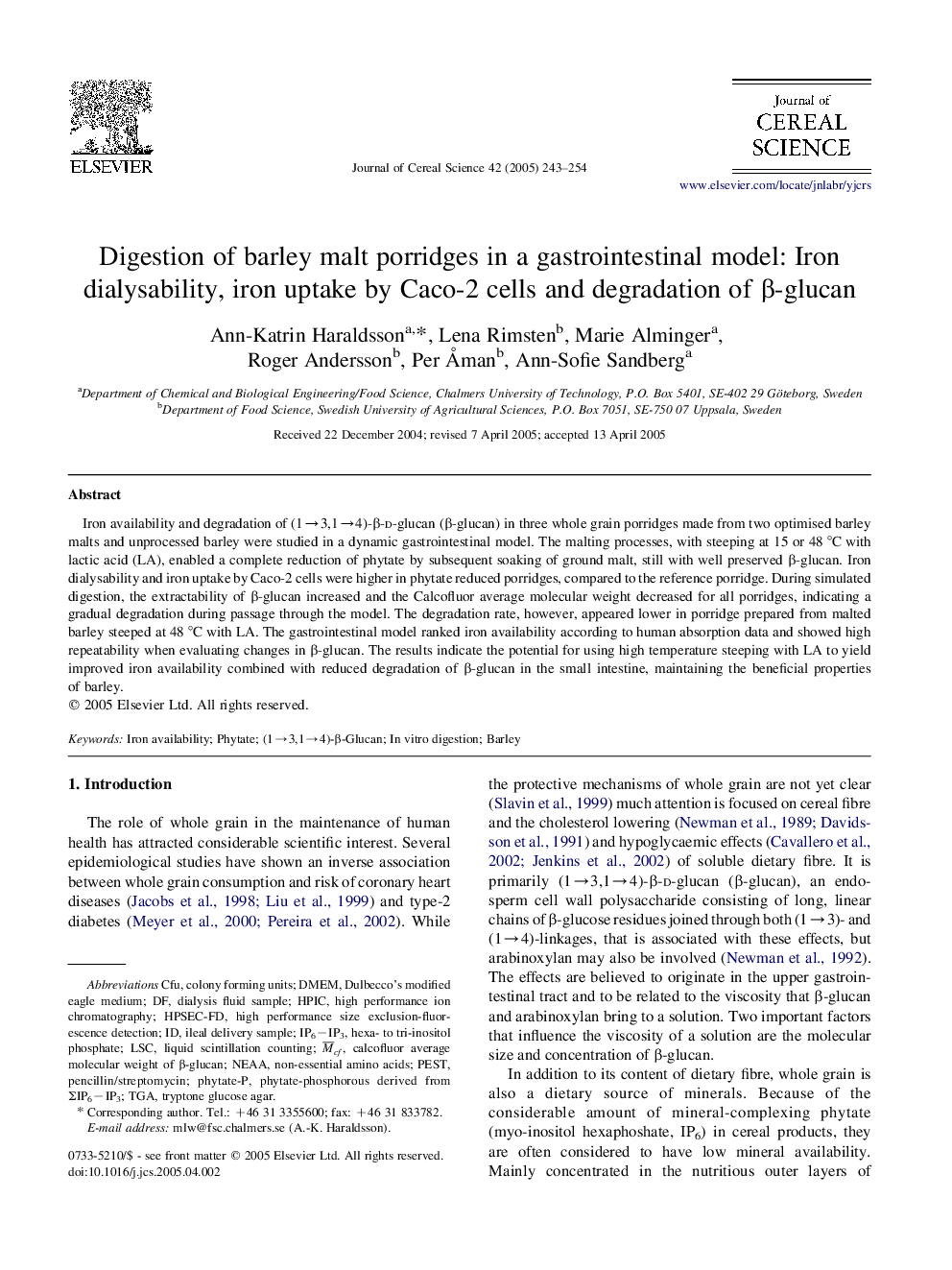| Article ID | Journal | Published Year | Pages | File Type |
|---|---|---|---|---|
| 9474543 | Journal of Cereal Science | 2005 | 12 Pages |
Abstract
Iron availability and degradation of (1â3,1â4)-β-d-glucan (β-glucan) in three whole grain porridges made from two optimised barley malts and unprocessed barley were studied in a dynamic gastrointestinal model. The malting processes, with steeping at 15 or 48 °C with lactic acid (LA), enabled a complete reduction of phytate by subsequent soaking of ground malt, still with well preserved β-glucan. Iron dialysability and iron uptake by Caco-2 cells were higher in phytate reduced porridges, compared to the reference porridge. During simulated digestion, the extractability of β-glucan increased and the Calcofluor average molecular weight decreased for all porridges, indicating a gradual degradation during passage through the model. The degradation rate, however, appeared lower in porridge prepared from malted barley steeped at 48 °C with LA. The gastrointestinal model ranked iron availability according to human absorption data and showed high repeatability when evaluating changes in β-glucan. The results indicate the potential for using high temperature steeping with LA to yield improved iron availability combined with reduced degradation of β-glucan in the small intestine, maintaining the beneficial properties of barley.
Keywords
Related Topics
Life Sciences
Agricultural and Biological Sciences
Agronomy and Crop Science
Authors
Ann-Katrin Haraldsson, Lena Rimsten, Marie Alminger, Roger Andersson, Per Ã
man, Ann-Sofie Sandberg,
